By Richard Dawid, Stephan Hartmann, and Jan Sprenger
“When you have eliminated the impossible, whatever remains, however improbable, must be the truth.” Thus Arthur Conan Doyle has Sherlock Holmes describe a crucial part of his method of solving detective cases. Sherlock Holmes often takes pride in adhering to principles of scientific reasoning. Whether or not this particular element of his analysis can be called scientific is not straightforward to decide, however. Do scientists use ‘no alternatives arguments’ of the kind described above? Is it justified to infer a theory’s truth from the observation that no other acceptable theory is known? Can this be done even when empirical confirmation of the theory in question is sketchy or entirely absent?
The canonical understanding of scientific reasoning insists that theory confirmation be based exclusively on empirical data predicted by the theory in question. From that point of view, Holmes’ method may at best play the role of a side show; the real work of theory evaluation is done by comparing the theory’s predictions with empirical data.
Actual science often tells a different story. Scientific disciplines like palaeontology or archaeology aim at describing historic events that have left only scarce traces in today’s world. Empirical testing of those theories always remains fragmentary. Under such conditions, assessing a theory’s scientific status crucially relies on the question of whether or not convincing alternative theories have been found.
Just recently, this kind of reasoning scored a striking success in theoretical physics when the Higgs particle was discovered at CERN. Besides confirming the Higgs model itself, the Higgs discovery also vindicated the judgemental prowess of theoretical physicists who were fairly sure about the existence of the Higgs particle already since the mid-1980s. Their assessment had been based on a clear-cut no alternatives argument: there seemed to be no alternative to the Higgs model that could render particle physics consistent.
Similarly, string theory is one of the most influential theories in contemporary physics, even in the absence of favorable empirical evidence and the ability to generate specific predictions. Critics argue that for these reasons, trust in string theory is unjustified, but defenders deploy the no alternatives argument: since the physics community devoted considerable efforts to developing alternatives to string theory, the failure of these attempts and the absence of similarly unified and worked-out competitors provide a strong argument in favor of string theory.
These examples show that the no alternatives argument is in fact used in science. But does it constitute a legitimate way of reasoning? In our work, we aim at identifying the structural basis for the no alternatives argument. We do so by constructing a formal model of the argument with the help of so-called Bayesian nets. That is, the argument is analyzed as a case of reasoning under uncertainty about whether a scientific theory H (e.g. string theory) is right or wrong.

A Bayes nets that captures the inferential relations between the relevant propositions in the no alternatives argument. D=complexity of the problem, F=failure to find an alternative, Y=number of alternatives, T=H is the right theory.
We argue that the failure of finding a viable alternative to theory H, in spite of many attempts by clever scientists, lowers our expectations on the number of existing serious alternatives to H. This provides in turn an argument that H is indeed the right theory. In total, the probability that H is right is increased by the failure to find an alternative, demonstrating that the inference behind the no alternatives argument is valid in principle.
There is an important caveat, however. Based on the no alternatives argument alone, we cannot say how much the probability of the theory in question is raised. It may be substantial, but it may only be a tiny little bit. In that case, the confirmatory force of the no alternatives argument may be negligible.
The no alternatives argument thus is a fascinating mode of reasoning that contains a valid core. However, determining the strength of the argument requires going beyond the mere observation that no alternatives have been found. This matter is highly context-sensitive and may lead to different answers for string theory, paleontology and detective stories.
Richard Dawid, Stephan Hartmann, and Jan Sprenger are the authors of “The No Alternatives Argument” (available to read for free for a limited time) in the British Journal for the Philosophy of Science. Richard Dawid is lecturer (Dozent) and researcher at the University of Vienna. Stephan Hartmann is Alexander von Humboldt Professor at the LMU Munich. Jan Sprenger is Assistant Professor at Tilburg University. Their work focuses on the application of probabilistic methods within the philosophy of science.
For over fifty years The British Journal for the Philosophy of Science has published the best international work in the philosophy of science under a distinguished list of editors including A. C. Crombie, Mary Hesse, Imre Lakatos, D. H. Mellor, David Papineau, James Ladyman, and Alexander Bird. One of the leading international journals in the field, it publishes outstanding new work on a variety of traditional and cutting edge issues, such as the metaphysics of science and the applicability of mathematics to physics, as well as foundational issues in the life sciences, the physical sciences, and the social sciences.
Subscribe to the OUPblog via email or RSS.
Subscribe to only philosophy articles on the OUPblog via email or RSS.
The post Inferring the unconfirmed: the no alternatives argument appeared first on OUPblog.

 I did this piece recently for the Illustration for kids promotion mailer and it is a perfect fit for this week's illustration friday! Happy Halloween!
I did this piece recently for the Illustration for kids promotion mailer and it is a perfect fit for this week's illustration friday! Happy Halloween!
Thanks for all the comments for the previous post, everyone! Its great to get positive feedback and I will be sure to do more posts like it in the future.
Over at the illustration for kids blog, we are comparing our old work vs. our recent work. What a trip down memory lane!
Work from Art school days:

On the left, a self portrait (yes, the chicken obsession was already evident) and on the right, a gouache painting for a concepts class.
Going digital- work from 2003:

You can read more on these
here. And be sure to check out the other
Illustration for Kids group members' comparison. Its quite facsinating to see how we've all progressed.
 I'm a rockin' girl! Both Anja and Zari.zhm gave me the rockin' girl blogger award. Thank you so much, ladies! I love Anja's color palette (colorful yet sophisticated) and Zarifi inspired me to do this-combine illustration with photos. You two are rockin' too!
I'm a rockin' girl! Both Anja and Zari.zhm gave me the rockin' girl blogger award. Thank you so much, ladies! I love Anja's color palette (colorful yet sophisticated) and Zarifi inspired me to do this-combine illustration with photos. You two are rockin' too!
So I'll pass on the award to the ladies over at
Illustration for kids. They are one of the best things that has happened since I started this blog...getting to know them and forming our illustration group. Just look at our summer mailer.
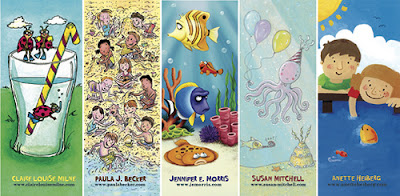

They are
Claire,
Paula,
Jenn,
Susan,
Anette and
Holli.
So busy busy here in the chicken coop. A leisurely summer is ending and now I have two huge projects that are going on at the same time. Some fun stuff last week though- I got a chance to meet with a very nice client face to face (a rare thing these days with emailing and the web). What a refreshing change! I got out of the house, woohoo!
Anyways, have a good week, everyone. Things are really crazy here but I hope to keep posts on a somwhat regular basis. Cheers!
MARK: Today I had help from Lucy, age 8, with today’s update. I asked her to talk about our stays in Bryan and Austin, TX while I typed what she said. Full disclosure – I took what she said and changed the order of some sentences so that it goes in chronological order. Otherwise, though, this is what she said. Her comments are in the larger font.
LUCY: When we came into Texas, we were listening to a song named "After Breakfast Let’s Go to Texas.” My mom and dad are in a band that’s called the Church Ladies and it's their song.
We went to Bryan, Texas and stayed with Petey, my mom’s friend. Petey is a really nice man. We walked around Texas A and M. It was really hot out and I liked it a lot. Petey told us about butterflies and Texas Rangers and trees.


MARK: For the Texas A&M football team, there is great importance given to "The Twelveth Man." Here's Karen with her hand on the thigh of that hallowed player.

Also, in Bryan we finally got our antenna fixed! Yay! Here's a picture with Daniel from the Honda dealer. Such a nice guy!

LUCY: We went to a restaurant. It was my dad’s birthday. It was a Mexican restaurant and I tried Sopapillas and I loved them. In the Sopapillas we put a candle and sang Happy Birthday to my dad.

Another day we went to Aunt Pat and Uncle Frank’s house in Austin, Texas. We saw Suzanne and Stephen my second cousins and Francesco, which is a baby, my new cousin. Francesco was 3 months old when I met him. He was really cute. I love the way that he holded on to my finger.
MARK: Here's Zoe with lovely Francesco, and then my family:


MARK: While we were at in Austin, Lucy decided to play with my aunt’s weight set and promptly dropped a 5lb weight hard on her left ring finger. It then proceeded to turn purple and swell up. It’s still purple and swelled, but a bit better now. And she can move it around, so we’ve decided it must be okay. Yet another adventure with Lucy.
(I have a picture of Lucy's finger but Karen seems to have hidden the camera and she's asleep right now -- the nerve! -- so I can't download it. But I'll put it up here soon)
LUCY: We went to lots of bookstores and me and Zoe got these little stuffed animals and my brother got a hat. We went in the kids section and played with the trains.

MARK: We loved the beautiful state capital building -- where we arrived just in time for an amazing tour. And we remembered the Alamo...


We visited an amazing independent bookstore in Autsin called Book People. They were very kind to us!
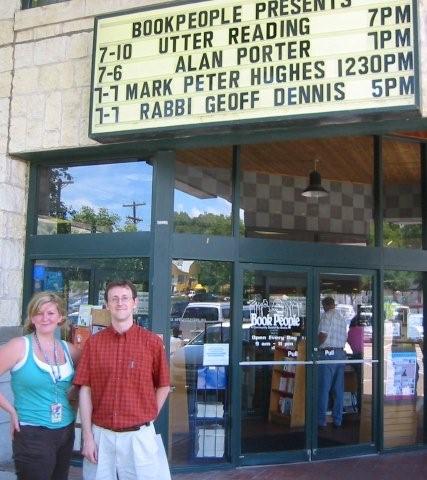
At a Barnes and Noble in Austin we had an unlikely encounter too strange for fiction: I was standing there talking with a bookseller when I heard a woman’s voice behind me say, “Mark? Mark Hughes, is that you?” I turned around and there, out of the blue, stood a familiar face from Rhode Island. Beverly Pettine is a friend of the family who used to work with my mother. Beverly doesn’t live down here in Texas--it was just a strange coincidence that she just happened to be visiting her sister in Austin (who knew?) and just happened to be in exactly the right the bookstore with her sister and niece when she saw a sign announcing that I was going to be appearing here. She looked at the time and my appearance just happened to be exactly when she was here. If I were to put that in a story, no one would believe it. Yet, here’s the proof: Here I am with Beverly in front of our car in Austin, TX, of all places. Whoda thunk? :-)
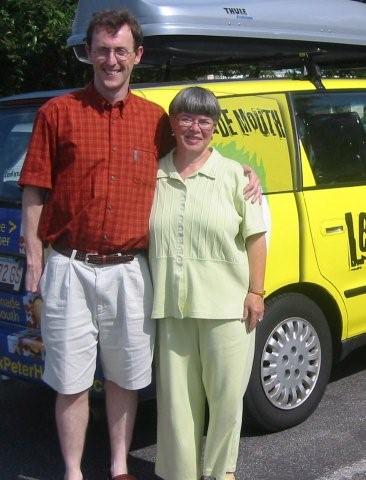
We also had a very nice afternoon with friends of friends. Our neighbor, Jay, grew up in the Dallas area so we were very pleased to meet Brad, Holly, Katie, and Grace, who live in Austin. Lovely people and our new friends in Texas. :-)

LUCY: Yesterday we went to Stephen and Jonathan’s house and they have five dogs. Their names were Max, Casey, Billy, Toby, and Lloyd. They were cute. I loved to pick Max up. He was the littlest but he was 31 years old. We went in Stephen and Jonathan’s pool and swam. Stephen and my dad and mom threw us in. It was really fun.
Right now my brother and sister are filling their stomachs with Cheetos. We’re driving to Dallas, Texas. We’re going to stay with Gigi. We were just listening to High School Musical in the car.
MARK: A sad note: I just got some terribly disappointing news from NPR – they are not going to air the road-trip stories after all. Given their already busy line up and the fact that the producer working with me will be away in Alaska for a month starting this week, they made their decision not to go forward with the road-trip stories. I can’t tell you how disappointed I am about this. I sent out the message about NPRs decision earlier this morning and was truly touched by the many, many the kind emails people sent in reply. I’m grateful to have such a supportive network.
On the other hand, I’ve already learned a great deal from working with NPR so far, and the experience has been a lot of fun. Perhaps after the summer is over I’ll submit some commentaries in the style of the first one, where I talked about quitting my job. We’ll see.
In any case, this is so far the only significant set-back in an otherwise successful and happy road trip/book tour. And I’m determined to get over it before we reach Dallas. :-)
I appreciate your friendship.
-- Mark
LEMONADE MOUTH (Delacorte Press, 2007)
I AM THE WALLPAPER (Delacorte Press, 2005)
www.markpeterhughes.com
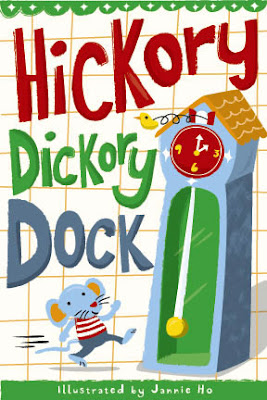
I've been thinking about doing a series of book cover designs with a nursery rhyme/fairy tales theme. Put them all together and it would make a neat portfolio. Check out other Hickory Dickory Dock illos over at the Illustration for Kids Blog.
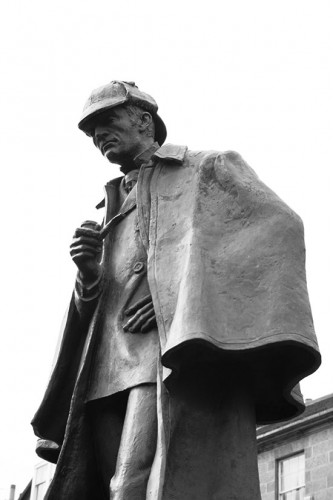







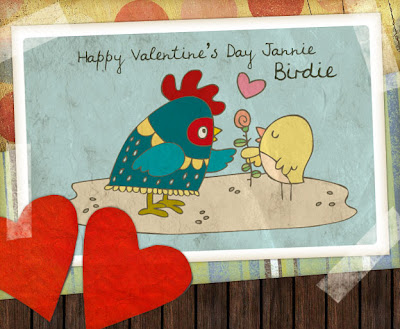























I wish I could have seen these in the store. All they ever have is Spongebob and Looney Toons. Liam would have loved these for school!
I love your baking theme work!
Those are all brilliant. I agree with Kim, it's so refreshing to see some really original, adorable Valentines for a change.
I love your lion and mouse baking, super cute and well done, as usual.
Happy valentine Jannie! These are all so cute!
I agree with Kim and sketched out...i'd love to see in the stores...super cute!
btw, you are tagged for the "love and peace" meme...
happy valentine!!!!
Ack! What an adorable mailer that is. I love the chicken valentine too, how appropriate.
Nice work!
i love the birdie
what a great post Jannie...so cheery and so sweet....
your work is adorable and I love popping by here...
Hope you had a wonderful day...
Cheers,
Diana
aww jannie :D am really happy you liked it :D thanks for displaying it here *hugs* what a terrible player birdie is *giggle*
Your work rocks! Go chickengirl, go chickengirl...
What a great Valentines mailer you've created, it's a hit! Happy Belated Valentines Day!
oooh, cookies!! so cute! i will have to ask you more about your promo card, i tried to do one and totally dropped the ball, i have so many in the air! ; ) finally getting to the post office tomorrow!!
a : )